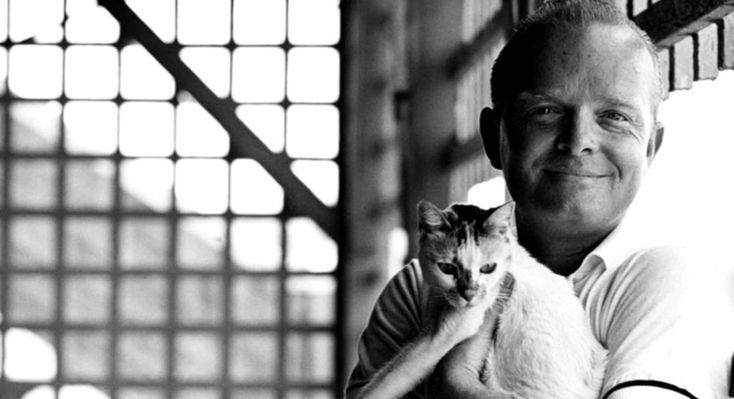Общественное животное: введение в социальную психологию - Эллиот Аронсон
Книгу Общественное животное: введение в социальную психологию - Эллиот Аронсон читаем онлайн бесплатно полную версию! Чтобы начать читать не надо регистрации. Напомним, что читать онлайн вы можете не только на компьютере, но и на андроид (Android), iPhone и iPad. Приятного чтения!
Шрифт:
Интервал:
Закладка:
166
Nisbett & Ross (1980); Shweder, R. (1977). Likeness and likelihood in everyday thought: Magical thinking in judgments about personality. Current Anthropology, 18, 637–658.
167
Pratkanis, A.R. (1989). The cognitive representation of attitudes. In A.R. Pratkanis, S.J. Bleckler, & A.G. Greenwald (Eds.), Attitude structure and function (pp. 71–98). Hilisdale, NJ: Eribaum. Pratkanis, A.R., & Greenwald, A.G. (1989). A socio-cognitive model of attitude structure and function. In L. Berkowitz (Ed.), Advances in experimental social psychology (Vol. 22, pp. 245–285). New York: Academic Press.
168
Pratkanis, A.R. (1988). The attitude heuristic and selective fact identification. British Journal of Social Psychology, 27, 257–263.
169
Thistlewaite, D. (1950). Attitude and structure as factors in the distortion of reasoning. Journal of Abnormal and Social Psychology, 45, 442–458.
170
Ross, L., Greene, D., & House, P. (1977). The «false-consensus» effect: An egocentric bias in social perception and attribution process. Journal of Experimental Soda! Psychology, 13,279–301.
171
Pratkanis, Cognitive representation.
172
О лабораторной демонстрации — см.: Gilovich, Т. (1981). Seeing the past in the present: The effect of associations to familiar judgments and decisions. Journal of Personality and Social Psychology, 40, 797–808.
173
Darley, J.M., & Gross, P.ff. (1983). A hypothesis-confirming bias in labeling effects. Journal of Personality and Social Psychology, 44, 20–33.
174
Hamilton, D.L., & Ross, T.L. (1980). Illusory correlation and the maintenance ofstereotypic beliefs. Journal of Personality and Social Psychology, 39, 832–845.
175
Pratkanis, A.R. Личное сообщение.
176
Chapman, L.J. (1967). Illusory correlation in observational report. Journal of Verbal Learning and Verbal Behavior, 6, 151–155. Chapman, L.J., & Chapman, J.P. (1967). Genesis of popular but erroneous psychodiagnostic observations. Journal of Abnormal Psychology, 72, 193–204. Chapman, L.J., & Chapman, J.P. (1969). Illusory correlation as an obstacle to the use of valid psychodiagnostic signs. Journal of Abnormal Psychology, 74,271–280.
177
Park, В., & Rothbart, M. (1982). Perception of out-group homogeneity and levels of social categorization: Memory for the subordinate attributes of in-group and out-group members. Journal of Personality and Social Psychology, 42, 1051–1068.
178
Обзоры и дискуссию — см.: Tajfel, Н. (1981). Human groups and social categories. Cambridge: Cambridge University Press. Turner, J.C. (1987), Rediscovering the social group. New York: Basil Blackwell.
179
Loflus, E.F., & Loftus, G.R. (1980). On the permanence of stored information in the human brain. American Psychologist, 35, 409–420.
180
Loftus, E.F., & Ketchum, К. (1991). Witness for the defense. New York: St.Martin’s Press.
181
Loftus, E.F., & Palmer, J.C. (1974). Reconstruction of automobile destruction: An example of the interaction between language and memory. Journal of Verbal Learning and Verbal Behavior, 13, 585–589.
182
Loftus, E.F. (1977). Shifting human color memory. Memory and Cognition, 5, 696–699.
183
Loftus, E.F. (1993). The reality of repressed memories. American Psychologist, 48, 518–537.
184
Ross, M., McFarland, С., & Fletcher, G.O.J. (1981). The effect of attitude on the recall of personal history. Journal of Personality and Social Psychology, 40, 627–634.
185
Gibbs, G. (1981). Teaching students to learn. Milton Keynes, England: Open University Press.
186
Pratkanis, A.R., Eskenaw, J., & Greenwald, A. G. (1990). What you expect is what you believe (but not necessarily what you get): On the effectiveness of subliminal self-help audiotapes.Unpublished manuscript.University of Santa Cruz. Greenwald, A.G., Spangenberg, E.R., Pratkanis, A.R., & Eskenazi, J. (1991). Double-blind tests of subliminal self-help audiotapes. Psychological Science, 12, 119–122.
187
Conway, M., & Ross, M. (1984). Getting what you want by revising what you had. JoumalofPersonality andSocial Psychology, 47, 738–748.
188
Wyatt, D.F., & Campbell, D. T. (1951). On the liability of stereotype or hypothesis. Journal of Abnormal and Social Psychology, 46, 496–500. Bruner, J.S., & Potter, M.C. (1964). Science, 144, 424–425.
189
Snyder, M., & Swann, W.B. (1978). Hypothesis-testing processes in social interaction. Journal of Personality and Social Psychology, 36, 1202–1212.
190
Fischhoff, В. (1975). Hindsight does not equal foresight: The effect of outcome knowledge on judgment under uncertainty. Journal of Experimental Psychology: Human Perception and Performance, 1, 288–299. Fischhoff, В. (1977). Perceived informativeness of facts. Journal of Experimental Psychology: Human Perception and Performance, 3,349–358.
191
Greenwald, A.G. (1980). The totalitarian ego: Fabrication and revision of personal history. American Psychologist, 35, 603–618.
192
LaPier, R. (1934). Attitudes versus actions. Social Forces, 13, 230–237.
193
Wicker, A. (1969). Attitudes versus actions: The relationship of verbal and overt behavioral responses to attitude objects. Journal of Social Issues, 25 (4), 41–78.
194
Jones, E.E. (1990). Interpersonal perception. New York: W.H. Freeman. Jones, E.E., & Davis, K.E. (1965). From acts to dispositions: The attribution process in person perception. In L. Berkowitz (Ed.), Advances in Experimental Social Psychology (Vol. 2, pp. 219–266). New York: Academic Press.
Прочитали книгу? Предлагаем вам поделится своим отзывом от прочитанного(прослушанного)! Ваш отзыв будет полезен читателям, которые еще только собираются познакомиться с произведением.
Уважаемые читатели, слушатели и просто посетители нашей библиотеки! Просим Вас придерживаться определенных правил при комментировании литературных произведений.
- 1. Просьба отказаться от дискриминационных высказываний. Мы защищаем право наших читателей свободно выражать свою точку зрения. Вместе с тем мы не терпим агрессии. На сайте запрещено оставлять комментарий, который содержит унизительные высказывания или призывы к насилию по отношению к отдельным лицам или группам людей на основании их расы, этнического происхождения, вероисповедания, недееспособности, пола, возраста, статуса ветерана, касты или сексуальной ориентации.
- 2. Просьба отказаться от оскорблений, угроз и запугиваний.
- 3. Просьба отказаться от нецензурной лексики.
- 4. Просьба вести себя максимально корректно как по отношению к авторам, так и по отношению к другим читателям и их комментариям.
Надеемся на Ваше понимание и благоразумие. С уважением, администратор knigkindom.ru.
Оставить комментарий
-
 Гость Светлана23 ноябрь 13:52
Как раз тот случай, когда героиня кроме раздражения ничего не вызывает. Читала другие книги Майер и ощущение, что писал кто -то...
Ты еще маленькая - Кристина Майер
Гость Светлана23 ноябрь 13:52
Как раз тот случай, когда героиня кроме раздражения ничего не вызывает. Читала другие книги Майер и ощущение, что писал кто -то...
Ты еще маленькая - Кристина Майер
-
 Гость Евгения17 ноябрь 16:05
Читать интересно. Очень хороший перевод. ...
Знаки - Дэвид Бальдаччи
Гость Евгения17 ноябрь 16:05
Читать интересно. Очень хороший перевод. ...
Знаки - Дэвид Бальдаччи
-
 Юлианна16 ноябрь 23:06
Читаю эту книгу и хочется плакать. К сожалению, перевод сделан chatGPT или Google translator. Как иначе объяснить, что о докторе...
Тайна из тайн - Дэн Браун
Юлианна16 ноябрь 23:06
Читаю эту книгу и хочется плакать. К сожалению, перевод сделан chatGPT или Google translator. Как иначе объяснить, что о докторе...
Тайна из тайн - Дэн Браун










